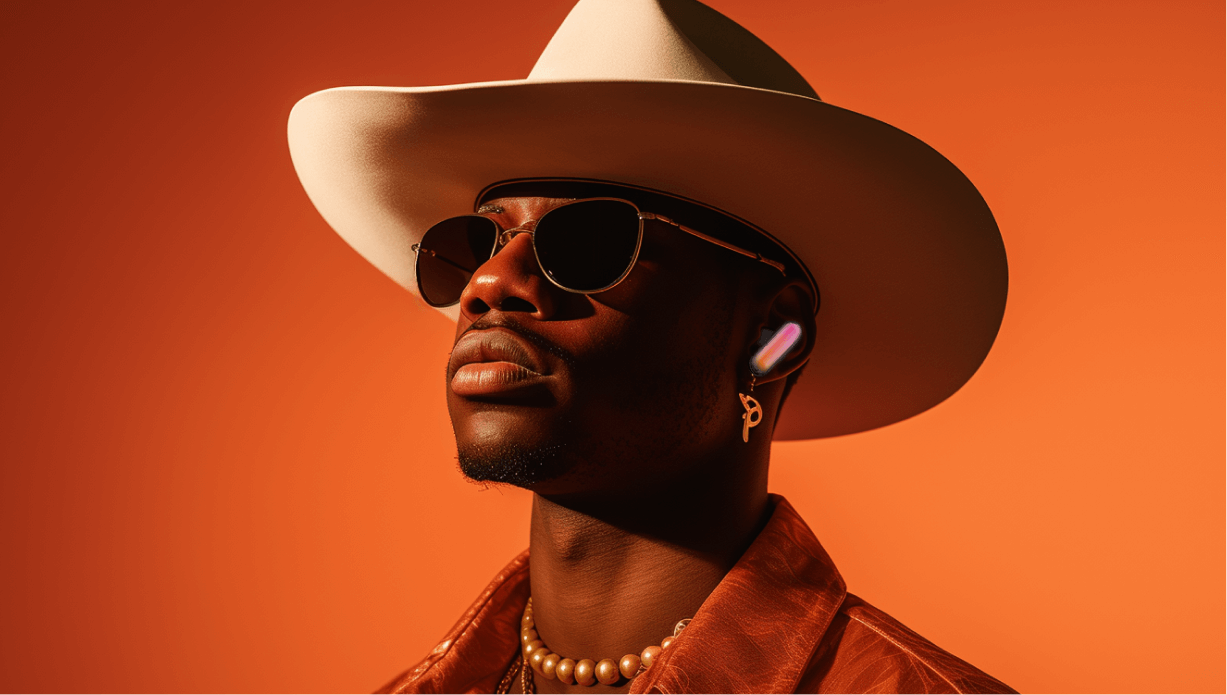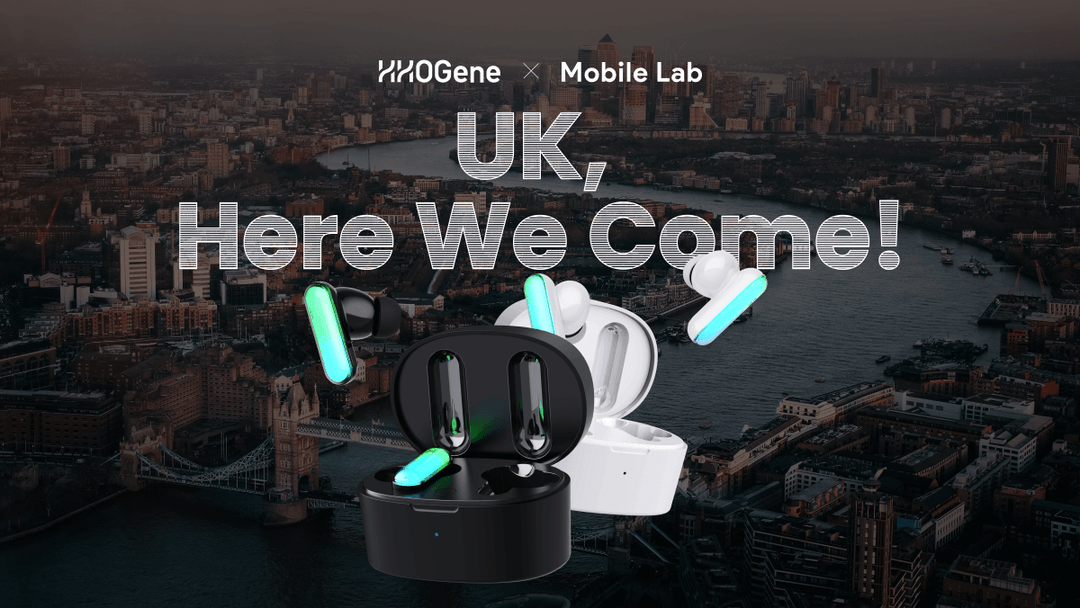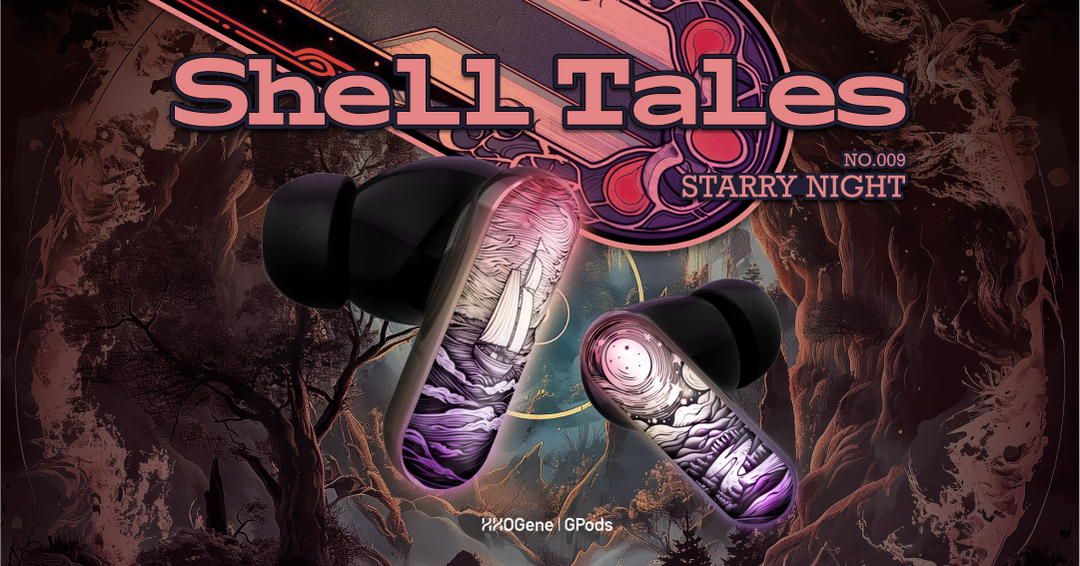HHOGene GPods first to apply photo color recognition to TWS earbuds industry
HHOGene GPods brings digital light control to the TWS Bluetooth earbuds, making color control as easy as you want it to be. Just 6 RGB LEDs can create at least 300,000 combinations with different color comb sort. Not only with this, we have incorporated the latest photo color recognition technology into HHOGene APP as well.
Displaying the environment and photo colors on GPods is an interesting thing in itself. The algorithm doesn't look that complicated, just extracting the picture colors and applying them to GPods. But when really going to adapt, collect and filter the most suitable and accurate color actually still needs a certain technical threshold, the logic behind it is introduced below through the several stages that photo color extraction goes through.
 The first step in taking a picture to get the color is to extract the color from the picture. Usually, most of the techniques for color extraction are to extract one main color from the image, however, we are not satisfied with taking a photo that only shows one color. Through research in the field of color extraction, we use the k-means clustering algorithm, which is used to analyze the main colors in an image. [K-means clustering algorlthm is a kind of common method of unsupervised learning in data mining. The more different objects are between clusters data, the more similar objects are within cluster data.] We vectorize the image and input it into the color extraction algorithm to get a set of original colors. However, if you apply this set of colors to GPods, you will find that the colors displayed are not the expected ones.
The first step in taking a picture to get the color is to extract the color from the picture. Usually, most of the techniques for color extraction are to extract one main color from the image, however, we are not satisfied with taking a photo that only shows one color. Through research in the field of color extraction, we use the k-means clustering algorithm, which is used to analyze the main colors in an image. [K-means clustering algorlthm is a kind of common method of unsupervised learning in data mining. The more different objects are between clusters data, the more similar objects are within cluster data.] We vectorize the image and input it into the color extraction algorithm to get a set of original colors. However, if you apply this set of colors to GPods, you will find that the colors displayed are not the expected ones.
 The same RGB color is displayed differently on the LED and the phone. This is due to the LED color display with the manufacturer, production process, etc., and GPods there is a layer of light guide material will also affect the color display. So what needs to be solved is the problem of color space mismatch between two color rendering systems. We solve the problem of color space mismatch by applying the colors on the phone to the GPods one by one through automated means, thus getting a mapping table.
The same RGB color is displayed differently on the LED and the phone. This is due to the LED color display with the manufacturer, production process, etc., and GPods there is a layer of light guide material will also affect the color display. So what needs to be solved is the problem of color space mismatch between two color rendering systems. We solve the problem of color space mismatch by applying the colors on the phone to the GPods one by one through automated means, thus getting a mapping table.
 After the color mapping table of the color rendering system is obtained, it is found that the GPods color space is not continuous, and due to the color rendering characteristics of LEDs, colors with lower luminance cannot be displayed, which leads to the colors taken out from the photos do not exist in the GPods color space; to solve this problem, we use the CIEDE2000 color difference algorithm to select a similar color by calculating the color difference. [CIEDE2000 is a formula that related a measured color difference to a known set of CIELAB coordinates. This formula has been succeeded because the CIELAB space turned out to be not as perceptually uniform as intended, especially in the saturated regions. This means that this formula rates these colors too highly as opposed to other colors.]This approach seems reasonable, but there are problems. Since the picture taken has many dark colors, and the GPods color space is mostly in the bright color area, it will lead to a big error between the similar color taken out of this part and the original color, giving a visual impression of a color that does not exist on the picture. In order to solve this problem, the color saturation and brightness of the low color to do the corresponding increase, can to a certain extent solve the problem of low brightness and saturation of the color can not be displayed.
After the color mapping table of the color rendering system is obtained, it is found that the GPods color space is not continuous, and due to the color rendering characteristics of LEDs, colors with lower luminance cannot be displayed, which leads to the colors taken out from the photos do not exist in the GPods color space; to solve this problem, we use the CIEDE2000 color difference algorithm to select a similar color by calculating the color difference. [CIEDE2000 is a formula that related a measured color difference to a known set of CIELAB coordinates. This formula has been succeeded because the CIELAB space turned out to be not as perceptually uniform as intended, especially in the saturated regions. This means that this formula rates these colors too highly as opposed to other colors.]This approach seems reasonable, but there are problems. Since the picture taken has many dark colors, and the GPods color space is mostly in the bright color area, it will lead to a big error between the similar color taken out of this part and the original color, giving a visual impression of a color that does not exist on the picture. In order to solve this problem, the color saturation and brightness of the low color to do the corresponding increase, can to a certain extent solve the problem of low brightness and saturation of the color can not be displayed.
 Since GPods color space does not contain low brightness, low saturation colors, it will lead to a large color difference between the similar colors of such colors. If the presence of such colors in the picture accounts for too high a percentage, it will appear that the color of the picture is extremely different from the color displayed by GPods, which may be two different colors. This seems to be an unsolvable problem, and can only be done in a balance between the color rendering range and human eye vision. First of all, the colors with too much color difference are eliminated to ensure that the colors of the pictures and GPods are visually consistent. Next, the colors with large area and small color difference are selected, which are more in line with the human eye's perception of the picture color. Finally, the selected colors are arranged to make them look more smooth and natural.
Since GPods color space does not contain low brightness, low saturation colors, it will lead to a large color difference between the similar colors of such colors. If the presence of such colors in the picture accounts for too high a percentage, it will appear that the color of the picture is extremely different from the color displayed by GPods, which may be two different colors. This seems to be an unsolvable problem, and can only be done in a balance between the color rendering range and human eye vision. First of all, the colors with too much color difference are eliminated to ensure that the colors of the pictures and GPods are visually consistent. Next, the colors with large area and small color difference are selected, which are more in line with the human eye's perception of the picture color. Finally, the selected colors are arranged to make them look more smooth and natural.
 This is the whole algorithm process of HHOGene GPods photo color recognition, of course, this is only the first version so far. We are still in the process of optimizing the color extraction and improving the user experience.
This is the whole algorithm process of HHOGene GPods photo color recognition, of course, this is only the first version so far. We are still in the process of optimizing the color extraction and improving the user experience.
Find out more about GPods at www.hhogene.com
Ref: https://en.wikipedia.org/wiki/K-means_clustering
https://en.wikipedia.org/wiki/Color_difference
Displaying the environment and photo colors on GPods is an interesting thing in itself. The algorithm doesn't look that complicated, just extracting the picture colors and applying them to GPods. But when really going to adapt, collect and filter the most suitable and accurate color actually still needs a certain technical threshold, the logic behind it is introduced below through the several stages that photo color extraction goes through.
 The first step in taking a picture to get the color is to extract the color from the picture. Usually, most of the techniques for color extraction are to extract one main color from the image, however, we are not satisfied with taking a photo that only shows one color. Through research in the field of color extraction, we use the k-means clustering algorithm, which is used to analyze the main colors in an image. [K-means clustering algorlthm is a kind of common method of unsupervised learning in data mining. The more different objects are between clusters data, the more similar objects are within cluster data.] We vectorize the image and input it into the color extraction algorithm to get a set of original colors. However, if you apply this set of colors to GPods, you will find that the colors displayed are not the expected ones.
The first step in taking a picture to get the color is to extract the color from the picture. Usually, most of the techniques for color extraction are to extract one main color from the image, however, we are not satisfied with taking a photo that only shows one color. Through research in the field of color extraction, we use the k-means clustering algorithm, which is used to analyze the main colors in an image. [K-means clustering algorlthm is a kind of common method of unsupervised learning in data mining. The more different objects are between clusters data, the more similar objects are within cluster data.] We vectorize the image and input it into the color extraction algorithm to get a set of original colors. However, if you apply this set of colors to GPods, you will find that the colors displayed are not the expected ones. The same RGB color is displayed differently on the LED and the phone. This is due to the LED color display with the manufacturer, production process, etc., and GPods there is a layer of light guide material will also affect the color display. So what needs to be solved is the problem of color space mismatch between two color rendering systems. We solve the problem of color space mismatch by applying the colors on the phone to the GPods one by one through automated means, thus getting a mapping table.
The same RGB color is displayed differently on the LED and the phone. This is due to the LED color display with the manufacturer, production process, etc., and GPods there is a layer of light guide material will also affect the color display. So what needs to be solved is the problem of color space mismatch between two color rendering systems. We solve the problem of color space mismatch by applying the colors on the phone to the GPods one by one through automated means, thus getting a mapping table. After the color mapping table of the color rendering system is obtained, it is found that the GPods color space is not continuous, and due to the color rendering characteristics of LEDs, colors with lower luminance cannot be displayed, which leads to the colors taken out from the photos do not exist in the GPods color space; to solve this problem, we use the CIEDE2000 color difference algorithm to select a similar color by calculating the color difference. [CIEDE2000 is a formula that related a measured color difference to a known set of CIELAB coordinates. This formula has been succeeded because the CIELAB space turned out to be not as perceptually uniform as intended, especially in the saturated regions. This means that this formula rates these colors too highly as opposed to other colors.]This approach seems reasonable, but there are problems. Since the picture taken has many dark colors, and the GPods color space is mostly in the bright color area, it will lead to a big error between the similar color taken out of this part and the original color, giving a visual impression of a color that does not exist on the picture. In order to solve this problem, the color saturation and brightness of the low color to do the corresponding increase, can to a certain extent solve the problem of low brightness and saturation of the color can not be displayed.
After the color mapping table of the color rendering system is obtained, it is found that the GPods color space is not continuous, and due to the color rendering characteristics of LEDs, colors with lower luminance cannot be displayed, which leads to the colors taken out from the photos do not exist in the GPods color space; to solve this problem, we use the CIEDE2000 color difference algorithm to select a similar color by calculating the color difference. [CIEDE2000 is a formula that related a measured color difference to a known set of CIELAB coordinates. This formula has been succeeded because the CIELAB space turned out to be not as perceptually uniform as intended, especially in the saturated regions. This means that this formula rates these colors too highly as opposed to other colors.]This approach seems reasonable, but there are problems. Since the picture taken has many dark colors, and the GPods color space is mostly in the bright color area, it will lead to a big error between the similar color taken out of this part and the original color, giving a visual impression of a color that does not exist on the picture. In order to solve this problem, the color saturation and brightness of the low color to do the corresponding increase, can to a certain extent solve the problem of low brightness and saturation of the color can not be displayed. Since GPods color space does not contain low brightness, low saturation colors, it will lead to a large color difference between the similar colors of such colors. If the presence of such colors in the picture accounts for too high a percentage, it will appear that the color of the picture is extremely different from the color displayed by GPods, which may be two different colors. This seems to be an unsolvable problem, and can only be done in a balance between the color rendering range and human eye vision. First of all, the colors with too much color difference are eliminated to ensure that the colors of the pictures and GPods are visually consistent. Next, the colors with large area and small color difference are selected, which are more in line with the human eye's perception of the picture color. Finally, the selected colors are arranged to make them look more smooth and natural.
Since GPods color space does not contain low brightness, low saturation colors, it will lead to a large color difference between the similar colors of such colors. If the presence of such colors in the picture accounts for too high a percentage, it will appear that the color of the picture is extremely different from the color displayed by GPods, which may be two different colors. This seems to be an unsolvable problem, and can only be done in a balance between the color rendering range and human eye vision. First of all, the colors with too much color difference are eliminated to ensure that the colors of the pictures and GPods are visually consistent. Next, the colors with large area and small color difference are selected, which are more in line with the human eye's perception of the picture color. Finally, the selected colors are arranged to make them look more smooth and natural. This is the whole algorithm process of HHOGene GPods photo color recognition, of course, this is only the first version so far. We are still in the process of optimizing the color extraction and improving the user experience.
This is the whole algorithm process of HHOGene GPods photo color recognition, of course, this is only the first version so far. We are still in the process of optimizing the color extraction and improving the user experience.Find out more about GPods at www.hhogene.com
Ref: https://en.wikipedia.org/wiki/K-means_clustering
https://en.wikipedia.org/wiki/Color_difference










Leave a comment